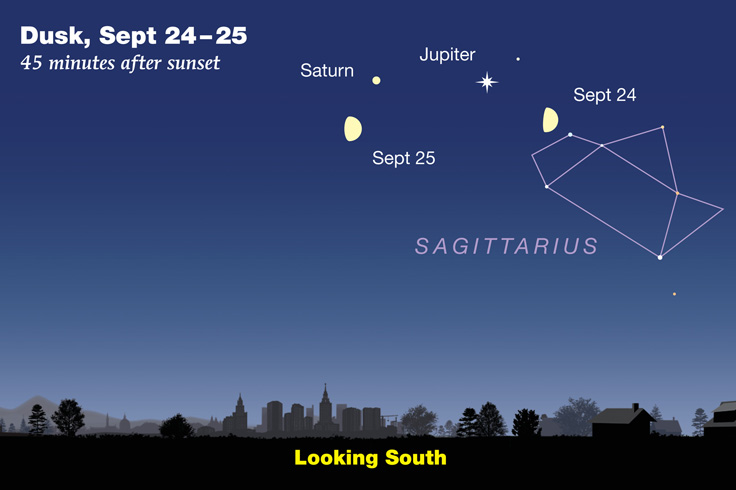Take advantage of September’s beautiful evenings to gaze upward as you listen to our guided tour of the star-filled sky.

Listen Here:
Podcast: Play in new window | Download
Subscribe: Apple Podcasts | Google Podcasts | Spotify | Email | RSS | More
This year, September’s equinox takes place on the 21st at 9:31 a.m. Eastern Daylight Time. Another celestial event associated with this equinox is the Harvest Moon. As explained in this month's Sky Tour astronomy podcast, it’s the name traditionally assigned to the Full Moon that falls closest to the autumnal equinox. But September’s full Moon occurs on the night of the 1st. Since October also features a full Moon on the 1st, which is closer to the equinox, that one will be the Harvest Moon — and this September’s is instead called the Full Corn Moon.

Sky & Telescope
From now until year’s end, we’ll enjoy a long run of great planet viewing. During September, you technically have a chance to spot all five of the brightest planets, the ones that our ancestors have been watching for thousands of years. This month’s podcast guides you to each one of them. (One of these planets can be seen both before dawn and in late evening — listen to our Sky Tour to learn which one!)
You can use Jupiter and Saturn to locate other stars in their vicinity. For example, look to the immediate lower-right of Jupiter for the Teapot-shaped stars of Sagittarius. Shift over to Saturn, and to its lower left is the constellation Capricornus, which is supposed to represent a quirky creature with the head of a goat and the tail of a fish. Despite being so well known as a constellation of the zodiac, Capricornus consists of fairly dim stars.
The bright star Vega is right overhead at nightfall, and you can use it to find three interesting star patterns nearby. One is the head of Draco, the Dragon, and another is known as the Keystone of the constellation Hercules. The third is a lovely semicircle of stars called Corona Borealis, the Northern Crown. September’s Sky Tour carefully guides you to each of these groupings.
In fact, the Sky Tour podcast is a great way to enjoy the stars and planets that you see overhead on these lovely September evenings. No stargazing experience or equipment is needed! So if you’ve got 15 minutes to spare, why not give it a try?
 1
1
Comments
Steven-Rudnick
September 25, 2020 at 4:41 pm
Let's be a little more careful with dates. Moot now, but the equinox was on the 22nd not the 21st.
You must be logged in to post a comment.
You must be logged in to post a comment.